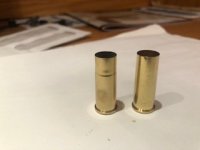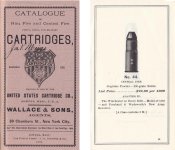Rambler42
SWCA Member
I have a NM3 Frontier that I reload for. I recently bought some extra brass from Starline and what I received was not what I expected. All the brass I used before had a definite step close to the end. The Starline brass seems to taper along the whole shell to get to the correct size at the end. It fits in the gun OK. Is this brass OK? Is it safe to shoot?
Thanks,
Thanks,


